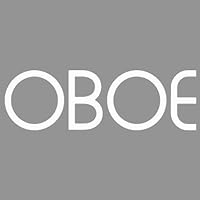When it comes to choosing the right hardware for data scientists, the decision often boils down to the age-old debate: workstation or laptop? Both options have their merits and drawbacks, making it essential to weigh the pros and cons before making a choice. In this article, we will explore the advantages of both workstations and laptops for data scientists, considering factors such as performance, portability, durability, battery life, upgradeability, and price. By the end, you’ll have a clearer understanding of which option is the best choice for you.
Key Takeaways:
- Advantages of Workstation for Data Scientists – A workstation offers higher processing power, larger storage capacity, and better graphics performance, making it ideal for complex data analysis tasks.
- Benefits of Laptop for Data Scientists – A laptop provides portability, allowing data scientists to work from any location and collaborate with others in different settings.
- Workstation vs Laptop Performance – While workstations generally outperform laptops in terms of performance, laptops have significantly improved and can handle most data science tasks efficiently.
- Considerations when Choosing Between Workstation and Laptop – Considerations such as workflow, budget, customization, future scalability, price, durability, portability, battery life, and upgradeability should guide data scientists’ choice between a workstation and a laptop.
Advantages of Workstation for Data Scientists
Data scientists can reap numerous benefits by using a dedicated workstation for their work. Workstations are specifically designed to meet the demanding requirements of data analysis tasks, offering several advantages that enhance productivity and performance.
- Higher Processing Power: Workstations are equipped with powerful processors that deliver superior computing performance. This allows data scientists to efficiently handle complex algorithms and process large datasets, reducing the time required for analysis.
- Larger Storage Capacity: Workstations often have ample storage space, providing data scientists with the ability to store and access massive amounts of data. This ensures that they have all the necessary resources readily available for their analyses, without the need for external storage devices.
- Better Graphics Performance: Workstations are equipped with advanced graphics cards that excel in rendering complex visualizations and running GPU-intensive tasks. This enables data scientists to create detailed visual representations of their data, facilitating deeper insights and better communication of findings.
- Increased Productivity and Multitasking: Workstations typically offer multiple connectivity options and support for multiple monitors. This allows data scientists to effortlessly connect various peripherals and work with multiple screens simultaneously. The expanded workspace enhances productivity and enables efficient multitasking.
- Customizability and Upgradeability: Workstations are highly customizable, allowing data scientists to tailor the hardware to their specific needs. Additionally, they offer greater upgrade options, enabling professionals to keep their workstations up to date with the latest technologies and meet evolving requirements.
Overall, workstations provide data scientists with a powerful and versatile computing environment that empowers them to tackle complex data analysis tasks efficiently. The combination of high processing power, ample storage capacity, superior graphics performance, and customization options makes workstations the ideal choice for professionals in the field.
Benefits of Laptop for Data Scientists
When it comes to the needs of data scientists, laptops offer numerous advantages that cater to their specific requirements. Let’s explore the key benefits of using a laptop for data science work:
- Portability: One of the greatest benefits of using a laptop is its portability. As a data scientist, you can work from any location, whether it’s your favorite coffee shop, a client’s office, or the comfort of your own home. Having the ability to carry your work with you provides flexibility and convenience, especially for those who frequently travel or need to collaborate with others in different settings.
- Battery Life: Modern laptops are designed to provide extended battery life, allowing data scientists to work for hours without the need to constantly plug in. This feature is particularly valuable when you’re on the move or in situations where power outlets may not be readily available.
- Powerful Performance: Laptops for data scientists are equipped with powerful processors and ample storage, ensuring they can handle the demanding tasks of data analysis. Whether it’s running complex algorithms, performing machine learning tasks, or handling large datasets, modern laptops are capable of delivering the necessary performance for most data science work.
- Built-in Features: Laptops often come with built-in features that are handy for data scientists. Many laptops are equipped with webcams and microphones, making them ideal for virtual meetings and online collaborations. These integrated features eliminate the need for additional peripherals, streamlining your workflow and enhancing productivity.
As you can see, laptops offer the convenience of portability, long battery life, powerful performance, and integrated features that cater to the specific needs of data scientists. These benefits make laptops a valuable tool for data science work, providing the flexibility and functionality required to excel in the field.
Workstation vs Laptop Performance for Data Scientists
When it comes to performance, workstations generally have the upper hand over laptops for data scientists. Workstations are equipped with dedicated graphics cards and high-end processors, allowing for faster data analysis and smoother visualizations. These powerful components work in tandem to handle complex computations and deliver reliable results.
However, it’s important to note that modern laptops have made significant strides in performance and can efficiently handle most data science tasks. Thanks to advancements in processor technology and improved graphics capabilities, laptops are now capable of tackling demanding computational workloads.
The performance gap between workstations and laptops has significantly narrowed, making laptops a viable option for data scientists who prioritize portability. Data scientists can expect their laptops to handle common data analysis tasks and run resource-intensive algorithms with ease.
It’s crucial for data scientists to consider their specific requirements when choosing between a workstation and a laptop. If you primarily work with large datasets, complex machine learning models, or conduct graphics-intensive visualizations, a workstation’s superior performance may be the better choice.
On the other hand, if you value the flexibility and mobility of working from anywhere, a laptop can offer adequate performance for most data science tasks. Laptops allow you to take your work on the go and collaborate with ease, making them a suitable option for data scientists who frequently travel or work in diverse environments.
Ultimately, the decision between a workstation and a laptop for data science comes down to prioritizing performance or portability. By carefully evaluating your needs and considering the trade-offs, you can choose the hardware that best suits your data science endeavors.
Considerations for Data Scientists When Choosing Between Workstation and Laptop
When it comes to choosing between a workstation and a laptop, data scientists need to carefully consider several factors to make an informed decision. The right choice will depend on their specific needs, preferences, and job requirements. Here are some key considerations to keep in mind:
Workflow
Consider your typical work environment and workflow.
If you primarily work in a fixed location, such as an office or a dedicated workspace, and require high processing power and storage capacity, a workstation may be the better choice for you. Workstations offer powerful hardware capabilities that can handle complex data analysis tasks efficiently.
On the other hand, if you frequently need to work on the go or collaborate with others in different settings, a laptop provides the advantage of portability and flexibility. Laptops are lightweight and compact, allowing you to work from anywhere and easily carry your work with you.
Budget
A crucial consideration is your budget.
Workstations are generally more expensive than laptops due to their high-end components and customization options. Depending on the specifications and brand, workstations can range from several thousand dollars to tens of thousands of dollars.
Laptops, on the other hand, are available at a wider price range, making them more budget-friendly for many data scientists.
Customization and Upgradeability
Think about the level of customization you require.
Workstations offer greater flexibility when it comes to customizing hardware components. They typically have multiple expansion slots and support for high-performance upgrades.
Laptops, while still customizable to some extent, have more limitations due to their compact design and integrated components. Customizing a laptop may require specific compatibility considerations and technical expertise.
Future Scalability
Consider your future needs and scalability requirements. As a data scientist, your computational demands may grow over time. It is important to choose a hardware option that can accommodate your evolving needs.
Workstations provide more room for scalability and can easily adapt to increasing demands.
Laptops, while not as scalable as workstations, can still handle most data science tasks efficiently with modern advancements in performance.
Price
When it comes to choosing between a workstation and a laptop for data science work, one important consideration is the price. When deciding between a workstation and a laptop, data scientists must carefully evaluate their budget and determine the balance between performance and affordability that suits their needs.
Workstations, with their high-end components and customization options, tend to be more expensive than laptops. The price range for workstations can vary significantly, from several thousand dollars to tens of thousands of dollars, depending on the specifications and brand.
Laptops, on the other hand, offer a wider range of prices to cater to different budgets. Budget options for laptops can start as low as a few hundred dollars, while high-end models can reach a few thousand dollars. This versatility in pricing makes laptops a more affordable option for many data scientists. But they do provide a more cost-effective solution without compromising on functionality.
Ultimately, the choice between a workstation and a laptop for data scientists depends on their specific requirements, financial resources, and priorities. It is important to weigh the benefits of each option against their respective prices to make an informed decision.
Durability
When it comes to the durability of your device, both workstations and laptops have their strengths and limitations.
Workstations are typically built with durability in mind, designed to endure heavy usage and long hours of operation. Their robust construction and high-quality components contribute to their longevity and reliability.
On the other hand, laptops are also built to be durable but may have certain limitations due to their portable nature. Being more exposed to physical stress, such as accidental bumps or drops, laptops may be more prone to wear and tear over time.
However, with proper care and handling, laptops can still provide a satisfactory life-span for data scientists. By taking precautions such as using protective cases or sleeves and avoiding rough handling, you can mitigate the risk of physical damage to your laptop. Regular maintenance, such as cleaning the keyboard and ensuring proper ventilation, can also help prolong its lifespan.
While workstations are typically known for their durability, laptops can still be reliable with the right care and precautions. Ultimately, ensuring the longevity of your device depends on how well you handle and maintain it.
Portability
When it comes to portability, there is a clear distinction between workstations and laptops for data scientists.
Workstations are typically larger and heavier, designed to function as stationary computers. Workstations, with their larger form factor, are less portable compared to laptops. They are designed to stay in one place, making them cumbersome to move around, especially if you need to work from different settings or collaborate with others on the go. Workstations are often found in dedicated workspaces, such as offices or research labs, where they offer the necessary power and performance for intensive data analysis tasks.
On the other hand, laptops offer the advantage of being portable, allowing data scientists to work from different locations. They are lightweight, compact, and easily fit in a bag or backpack, allowing you to carry your work wherever you go. This mobility enables data scientists to be productive while traveling, during fieldwork, or when collaborating with colleagues outside the office.
Laptop portability is particularly beneficial for data scientists who often find themselves working on the go. Whether it’s attending conferences, meetings, or conducting research in the field, laptops provide the flexibility to access data and perform analysis from any location. Furthermore, laptops are equipped with built-in features such as webcams and microphones, making them convenient for virtual meetings and online collaborations.
However, it’s important to note that while laptops prioritize portability and convenience, they may have certain limitations in terms of performance and hardware customization compared to workstations. Data scientists should carefully evaluate their mobility needs and weigh them against the necessary processing power and storage capacity.
Battery Life
When it comes to battery life, workstations and laptops have significant differences.
Workstations are typically connected to a power source, which means they don’t rely on battery power for operation. As a result, workstations don’t have a dedicated battery, and their power supply remains uninterrupted throughout use.
Laptops, on the other hand, heavily depend on battery power. The battery life of a laptop can vary based on factors such as usage, settings, and battery capacity. Modern laptops, however, have made significant improvements in battery life and can last for several hours of continuous use.
Data scientists who require extended periods of uninterrupted work should consider laptops with longer battery life or carry additional batteries to ensure they have enough power to meet their needs.
Battery Life
When it comes to battery life, workstations and laptops have significant differences.
Workstations are typically connected to a power source, which means they don’t rely on battery power for operation. As a result, workstations don’t have a dedicated battery, and their power supply remains uninterrupted throughout use.
Laptops, on the other hand, heavily depend on battery power. The battery life of a laptop can vary based on factors such as usage, settings, and battery capacity. Modern laptops, however, have made significant improvements in battery life and can last for several hours of continuous use.
Data scientists who require extended periods of uninterrupted work should consider laptops with longer battery life or carry additional batteries to ensure they have enough power to meet their needs.
Upgradeability
When it comes to upgradeability, workstations have a clear advantage over laptops for data scientists.
Workstations are designed with expandability in mind, allowing users to easily swap out components and enhance their capabilities. They typically have multiple expansion slots and support high-performance hardware upgrades, enabling data scientists to keep up with evolving technology and demanding workloads.
For data scientists who anticipate the need for frequent upgrades and customization, workstations provide greater flexibility. With their expandable hardware options, data scientists can easily adapt their workstations to meet changing requirements. Whether it’s adding more RAM, upgrading the graphics card, or increasing storage capacity, workstations offer the versatility needed for demanding data science tasks.
On the other hand, laptops have more limitations in terms of upgradeability due to their compact design and integrated components. While some laptops still offer upgrade options, they often require specific compatibility and expertise. Upgrading laptops may involve replacing specific components or even entire modules, which can be more complex and time-consuming compared to workstations.
While laptops may have limitations in terms of upgradeability, they still offer a certain level of flexibility. Some laptops allow for RAM expansion or upgrading to a larger storage drive, providing a modest ability to adapt to changing requirements. However, these upgrade options are often more limited compared to workstations, and data scientists may need to carefully consider their long-term needs before investing in a laptop.
When making this decision, it’s crucial for data scientists to assess their specific needs, budget, and the nature of their work. By carefully evaluating the upgradeability factor, data scientists can make an informed decision that aligns with their long-term goals and empowers them to excel in their data science endeavors.
Conclusion
The choice between a workstation and a laptop for data scientists ultimately depends on your individual preferences, priorities, and specific job requirements. Workstations offer superior performance and customization options, making them ideal for handling complex data analysis tasks. However, they lack the portability and flexibility of laptops.
On the other hand, laptops are not as powerful as workstations but provide the advantage of mobility. They allow you to work from different locations, making them suitable if you frequently travel or need to collaborate with others in various settings.
Talking about Laptops for Data scientists, one laptop that stands out is HP ZBook Studio 16 G9 Mobile Workstation PC with its Powerful processor and 3 GB Ram and 1TB SSD. It is one of those laptops that can perform as good as a workstation.
Ultimately, There is no one-size-fits-all answer, and the choice ultimately depends on personal preferences and individual requirements. When making your decision, it is important to carefully consider the factors mentioned above in this article. Evaluate the specific requirements of your data science tasks and determine whether the higher processing power and customization options of a workstation are necessary or if the portability and flexibility of a laptop better suit your needs.
By carefully weighing these factors, you can choose the hardware option that best suits your data science needs and helps you excel in your work as a data scientist.
Compare and view all the best laptops for data scientists under 4 lakh





















